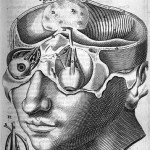computation
With 2001 in the rear-view mirror, there have been no little green men, no meal-replacement pills, no flying automobiles, no space odysseys. But as big-budget plans to model the human brain prove, proponents of artificial intelligence remain hopeful. In its most literal sense, AI exists already: encoded and executed, endowed with sensors, lenses and microphones, connected to the internet, and stuck in your pocket. But how intelligent does a machine have to be before our worst nightmares come true? Intelligent enough to pass a Turing test? Intelligent enough to nuke the human race? And/or…
By Dr. Gerry Harp, Senior Astrophysicist, Center for SETI Research, SETI Institute, and Gail Jacobs
Trained as a quantum mechanic, Dr. Gerry Harp was deeply interested in possibilities for using the multiple telescopes of the Allen Telescope Array to generate steerable "beams" on the sky -- beams that could be far smaller than any single antenna could produce. Such beams don't emit anything, but work in reverse by capturing only energy that comes from the sky in a certain direction. Gerry joined the SETI Institute in 2000, practically at the telescope's inception and uses the telescope for…
In my post yesterday, I briefly mentioned the problem with simulations
as a replacement for animal testing. But I've gotten a couple of self-righteous
emails from people criticizing that: they've all argued that given the
quantity of computational resources available to us today, of course
we can do all of our research using simulations. I'll quote a typical example
from the one person who actually posted a comment along these lines:
This doesn't in any way reduce the importance of informing people about
the alternatives to animal testing. It strikes me as odd that the author of
the…
In general, I try to keep the content of this blog away from my work. I don't do
that because it would get me in trouble, but rather because I spend enough time on work, and blogging is my hobby. But sometimes there's an overlap.
One thing that's come up in a lot of conversations and a lot of emails it the idea of cloud computing. A lot of people are interested in it, but they're not really sure of what it is, or what it means.
So what do we mean when we talk about "cloud computing"? What's the cloud? How's it different from good old-fashioned client/server computing?
The idea of cloud…
I'm away on vacation this week, taking my kids to Disney World. Since I'm not likely to
have time to write while I'm away, I'm taking the opportunity to re-run an old classic series
of posts on numbers, which were first posted in the summer of 2006. These posts are mildly
revised.
Ω is my own personal favorite transcendental number. Ω isn't really a specific number, but rather a family of related numbers with bizarre properties. It's the one real transcendental number that I know of that comes from the theory of computation, that is important, and that expresses meaningful fundamental…
Technorati Tags: scale, computation, information
Since people know I work for Google, I get lots of mail from folks with odd questions, or with complaints about some Google policy, or questions about the way that Google does some particular thing. Obviously, I can't answer questions about Google. And even if I could, I wouldn't. This isn't a Google blog; this is my blog, which I write as a hobby in my free time.
But there are intersections between my work life and my hobby. And one of the ideas that underlies many of the questions that I receive, and which also
hits on my work, and my…
While doing some reading on rings, I came across some interesting stuff about
Monoids and syntax. That's right up my alley, so I decided to write a post about that.
We start by defining a new property for monoids - a kind of equivalence
relation called a monoid congruence. A Monoid congruence defines
equivalence classes within the set of values in a monoid. The monoid congruence
relation is generally written as "~", and it's a relation between two values in a
monoid: ~⊆M×M. A monoid congruence has all of the usual properties
of an equivalence relation: it's symmetric, reflexive, and…
Colored Petri Nets
The big step in Petri nets - the one that really takes them from a theoretical toy to a
serious tool used by protocol developers - is the extension to colored Petri nets (CPNs). Calling them "colored" is a bit of a misnomer; the original idea was to assign colors to tokens, and allow color-based expressions on the elements of the net. But study of analysis models quickly showed
that you could go much further than that without losing the basic analyzability properties
that are so valuable. In the full development of CPNs, you can associate essentially arbitrary
collections…
Among many of the fascinating things that we computer scientists do with graphs
is use them as a visual representation of computing devices. There are many subtle problems that can come up in all sorts of contexts where being able to see what's going on can make a huge difference. Graphs are, generally, the preferred metaphor for most computing tasks. For example, think of finite state machines, flowcharts, UML diagrams, etc.
One of the most interesting cases of this for one of the biggest programming problems today is visual representations of concurrency. Concurrent program is incredibly…
If you remember, a while back, I wrote about a British computer scientist named James Anderson, who
claimed to have solved the "problem" of "0/0" by creating a new number that he called nullity. The
creation of nullity was actually part of a larger project of his - he claims to have designed a computing
machine called the Perspex machine which is strictly more powerful that the Turing machine. If
this was true, it would mean that the Church-Turing thesis is false, overturning a huge part of the theory
of computer science.
Of course, just overturning the theory of computer science isn't…

